The “most powerful rainstorm in Guangdong history” began on the night of May 6, and 16 people there have died with 4 still missing. After a mere few hours of heavy rain in Guangdong, over 30 parking garages are flooded and thousands of cars lie beneath the water level. A worker at a property company in Longkou District in the city of Guangzhou told the Information Times, “Last night (May 6) we had to stuff the entrances of the underground parking garage with sandbags, but the rain came so hard. It was just like a waterfall.”
A mudslide struck a village in the city of Shaoguan in northern Guangdong Province, demolishing 13 houses instantly and submerging an entire village on the night of May 6. Villager Yang Weilian told Guangzhou Daily, “Suddenly, I heard a loud rumbling from afar, as if an airplane were flying low over the village.” He said he then saw a raging flood, followed by a mass roar of avalanches rapidly rumbling toward the village. The villagers eventually stood outside of their village, watching helplessly as the mudslides crashed and submerged their houses.
The Hunan Flood Control and Drought Relief Command Center reported on May 7 that a heavy rainstorm caused devastation in seven towns, 22 counties, and 307 rural towns in Hunan, affecting 169,000 people. There have been eight deaths and two are reported missing, with the numbers still climbing.
In Hunan Province, avalanches and mudslides have hit more than 1,000 locations. Several thousand houses have collapsed and thousands of people have become homeless.
Feng Liurong, a resident of Shuiche, a town in Xinhua County, Hunan Province, told a reporter from rednet.cn that she nearly lost her life. She received a call from her brother at 4 a.m., and she woke up her husband, children, and neighbors. Holding hands, they walked to the local school in the dark. When they arrived, they watched in tears as the bridge they had just crossed was crushed by the raging flood.
Zheng Zhang, an 80-year-old from Xixi Village in the same town, said that this was the largest flood he had ever seen in his lifetime.
In Guizhou Province on the night of May 5, several villages simultaneously experienced mudslides and avalanches. Four houses collapsed and nine people were buried under the turbid waters. In the mountain regions of Guizhou Province, numerous mountain torrents have also been causing a rising number of deaths and disappearances.
One police officer told rednet.cn that a village with 300 people in Guizhou Province “looked like hell” after the mudslide hit; trees and rocks submerged in yellowish mud have destroyed some houses along with all the corn and bean crops.
Life-Threatening Winds in Dianjiang, Chongqing
On May 5, 12 districts/counties in the city of Chongqing in Sichuan Province experienced strong winds accompanied by hail and heavy rain. Weather reports said it was the heaviest rain in half a century. Chinese media reported that the disastrous weather has caused at least 31 deaths and affected 897,800 people.
Liu Lusheng, a villager of Maohe Village in Chongqing, recalls seeing egg-sized hail crashing onto the pavement. When his door was blown open by the strong winds, he saw his 100-pound motorcycles flying out about 20 yards.
Ou Xiaorong, a villager from Guixi Village in Dianjiang County, said she was awakened up by the sound of wind and hail, and suddenly saw a vague figure “like a spinning helicopter” crash into her house. At dawn, she found that a metal structure connected to a large piece of aluminum roof tile was stuck in a tree, according to a report by the Beijing News on May 8.
Several counties in Jiangxi Province were severely affected by this unusual rainstorm. Highways were blocked by mudslides. Some villages and schools were flooded. In Dingnan County, there were seven deaths and five are missing. An estimated 167,000 people were affected by the disaster in the city of Ganzhou. There are 515 collapsed houses, and there have been 4,430 emergency evacuations, according to a Xinhua News report on May 8.
The weather forecast is not good for the following few days. National Meteorological Center has reported that heavy rains will continue in the provinces of Guanxi, Guangdong, southern Jiangxi , northern Hunan, and in Chongqing from May 11 through May 13.
Read the original Chinese article.
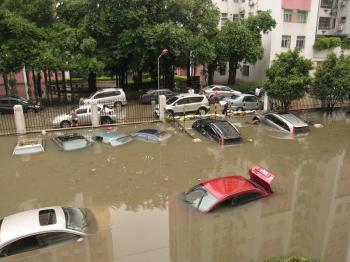
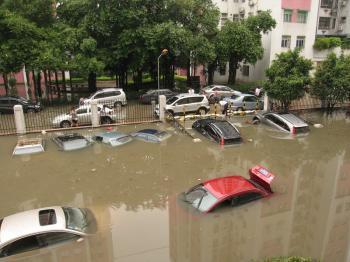
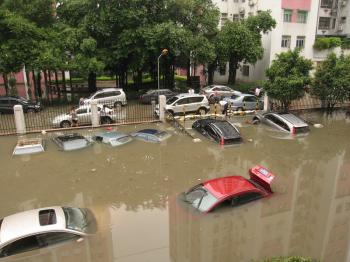
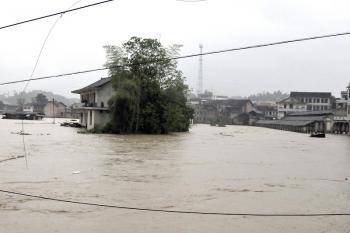
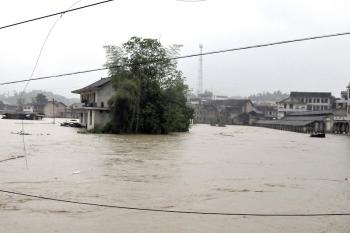
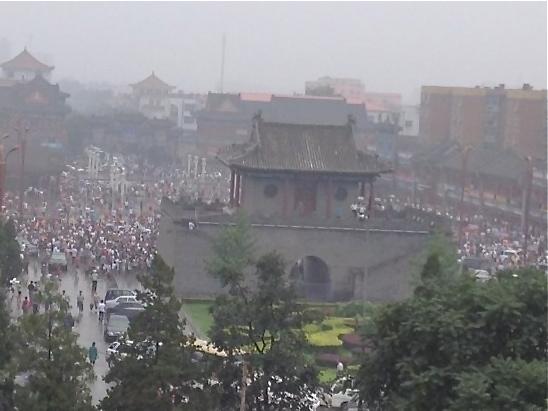



Friends Read Free